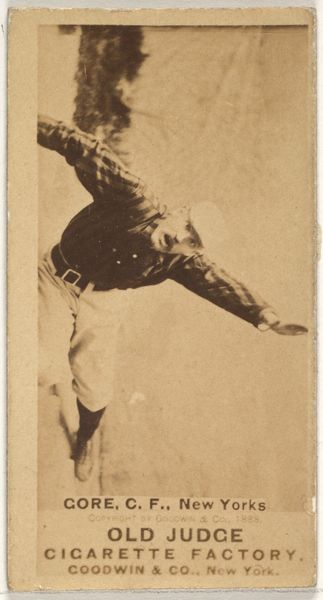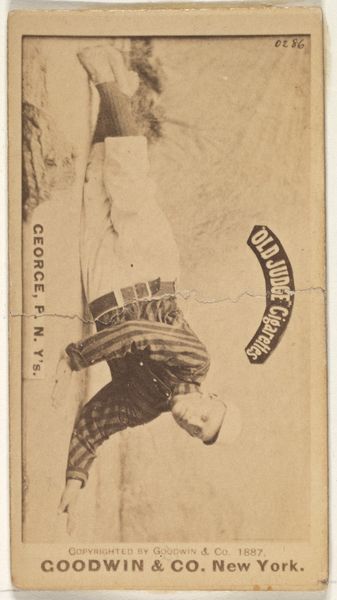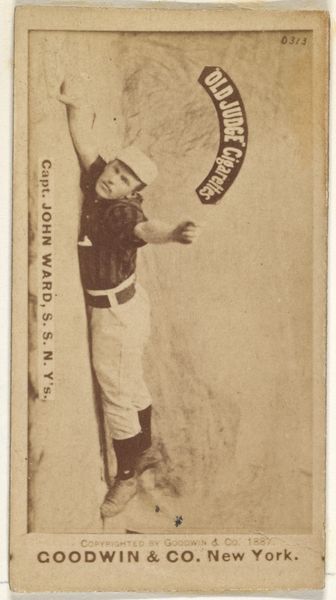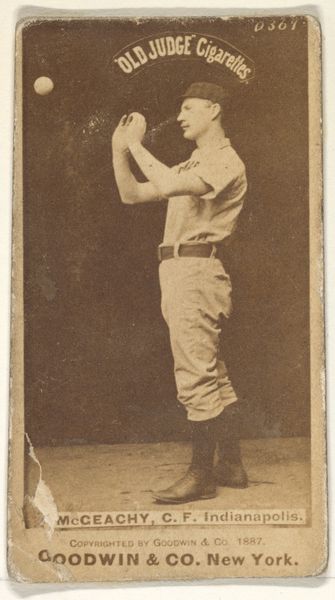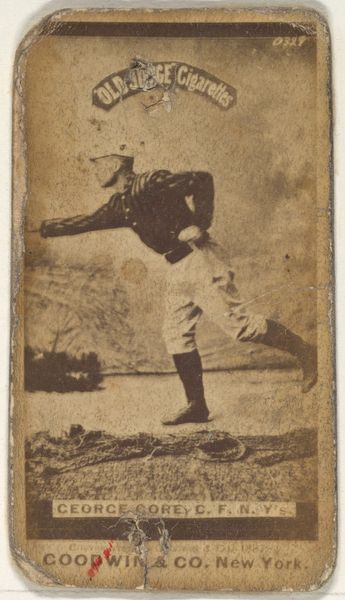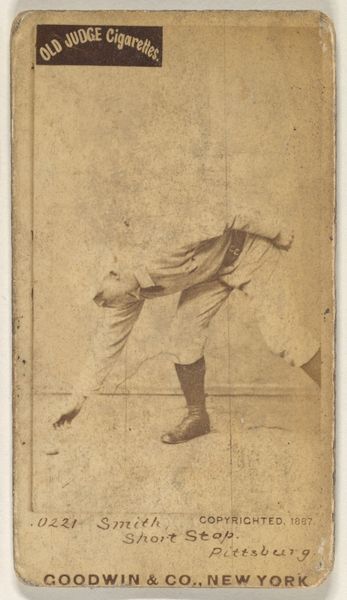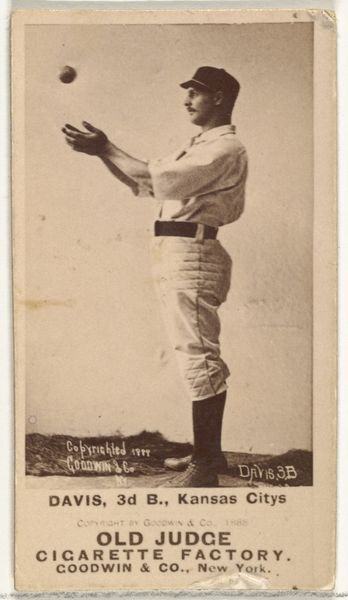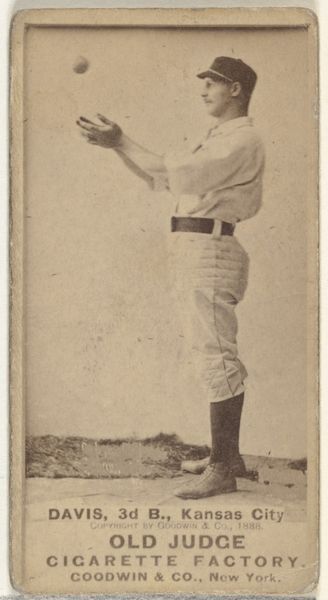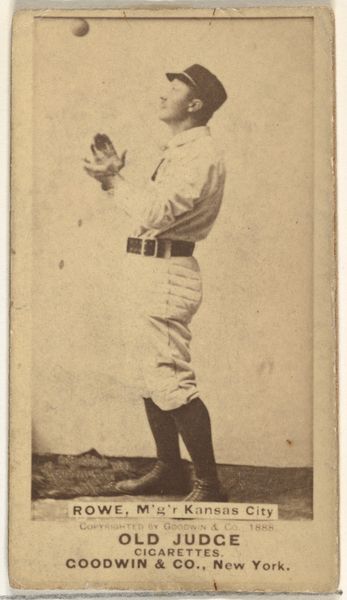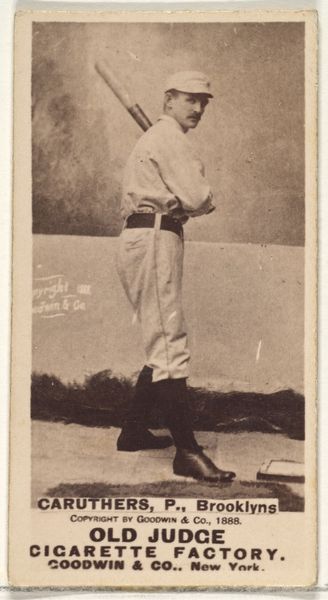
George F. "Piano Legs" Gore, Center Field, New York, from the Old Judge series (N172) for Old Judge Cigarettes 1887
0:00
0:00
print, photography, gelatin-silver-print, albumen-print
#
portrait
# print
#
baseball
#
photography
#
gelatin-silver-print
#
genre-painting
#
albumen-print
Dimensions: sheet: 1 3/8 x 2 11/16 in. (3.5 x 6.9 cm)
Copyright: Public Domain
Curator: Here we have a baseball trading card featuring George F. "Piano Legs" Gore, a center fielder for New York, created around 1887. It’s part of the "Old Judge" series produced by Goodwin & Company as promotional material for their cigarettes, utilizing albumen-silver print photography. Editor: My first thought is, wow, the pose is unexpectedly dynamic for such an early photograph. He's really leaning, almost mid-sprint; there’s this feeling of caught motion. I find that captivating, though I am wondering about the ethics of advertisement here as it’s attached to products with known health issues. Curator: Absolutely. The image's dynamism stems from the evolution of photographic techniques. Goodwin & Company employed innovative methods to capture athletes in action. Furthermore, this seemingly simple card acted as a key cultural artifact. Its distribution tells a broader story about the rising popularity of baseball and the role of corporations in shaping American leisure and cultural practices during the late 19th century. Think of it within that gilded age context: a period of innovation, growth, but also intense societal disparities. Editor: That said, to view this within the framework of the Gilded Age brings up questions of labor. It's also worthwhile to consider the cultural narratives at play – this focus on athletics promoted specific masculine ideals. Who got to be an athlete? Who was left out, who profited from these images and products versus who faced negative repercussions? The card celebrates an athlete, yet what of all the marginalized people excluded from the dominant narrative? The celebration rings hollow, in some sense. Curator: Yes, exactly. Examining these cards reveals much more than simply the rise of baseball. Consider too how the advertising works; these cards not only promoted a product, but associated the consumption with particular lifestyles. There's a complex interplay between commerce, representation, and identity. In our own present-day we should continue to reflect on who benefits from visibility. Editor: I agree entirely. Even now, that question of representation is as vital as ever, highlighting the fact that art, like this trading card, can offer insight into its period, but additionally push us to reconsider whose stories are remembered.
Comments
No comments
Be the first to comment and join the conversation on the ultimate creative platform.
